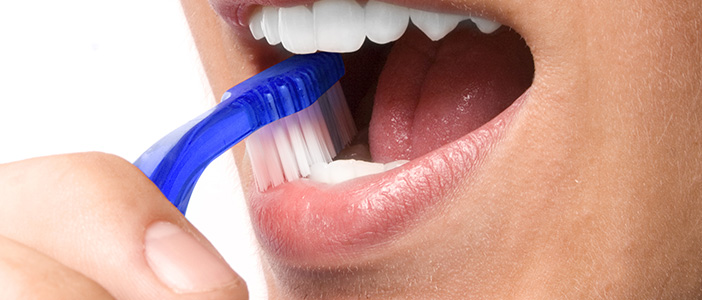Do I Have a Cavity?
Article featured on The Schulhof Center
Do you remember the old-fashioned cartoons your dentist used to show you as a child, like the one meant to scare you into brushing by showing little men with drills pounding holes in your teeth as you slept? While that may not be the most scientific explanation for this common oral problem, the basic concept is essentially correct. Your teeth do have little enemies that can and will try to destroy them, if allowed. Some of the bacteria that live in your mouth thrive on sugars, and when they’re fed, they produce an acid that can literally eat a hole in your tooth enamel. Those pits and holes in your teeth are called cavities, and if they’re not treated, they can cause you to lose a tooth.
Your tooth enamel is the hardest substance in your body. It can withstand extreme conditions and will probably outlast you, but even it can be worn down by acid. If you have a diet that’s high in the starches and sugars that acid-producing bacteria love, you need to be especially diligent about brushing twice a day and flossing every night to deny them the chance to produce that acid.
But say you don’t. You have a crazy schedule, or you aren’t great about brushing your dental appliance like traditional or hidden braces. What’s the worst that could happen? Well, gradually the bacteria in your mouth will coat your teeth with layers of acid plaque, a sticky film that will soften your tooth enamel and even the layer of dentin underneath. Since there’s no feeling in your tooth enamel, you can have a cavity that punches right through it without knowing. It’s when the acid starts to bore into the layers underneath that you begin to know you have a problem. If you have tooth sensitivity to cold or hot or sweet foods, you could have a cavity. If you don’t have a dentist fix the problem at this stage, it can progress until your dental pulp is infected, and you may have severe nerve pain.
In its early stages, a cavity may be small and painless and invisible to the eye. Your dentist may catch it on an x-ray or during a dental examination. When this happens, he or she removes the decayed parts of the tooth and fills the cavity with materials like porcelain, gold or resin. You’ll likely have no more drama. If you come in later, and the cavity is larger, you may already be having pain when you drink iced tea or eat ice cream. The dentist may still be able to simply fill the cavity. But if you come in only when it’s very obvious that you have issues, the cavity may be so large or brown that it can be seen with the naked eye, and you may have pain ranging from occasional sensitivity to hot foods, to stabbing nerve pain. At this stage, depending on how advanced your cavity is, you may have to have a crown or a root canal to save your tooth. If the problem is very severe, you may lose the tooth altogether.
Don’t compromise your oral health by slacking off on your daily hygiene—you’ll be sorry later. Most of the time cavities can be avoided very simply: brush and floss your teeth daily, and see your dentist for regular check-ups. If you wear any kind of braces, ask your orthodontist to show you how to make sure they’re clean and free of food particles. That way, everyone will be smiling at your next appointment.
Looking for an orthodontist in Beaverton, Oregon? Biermann Orthodontics is a cutting-edge orthodontic practice that serves Beaverton and Molalla, OR, and focuses on providing world-class customer service and efficient treatment. We strive to create stunning smiles in the shortest amount of time without ever sacrificing quality.
Visit our Locations page to find a clinic near you, or schedule an initial consultation.
Biermann Orthodontics
503-690-0722
17885 NW Evergreen Parkway, Suite 200
Beaverton, OR 97006



